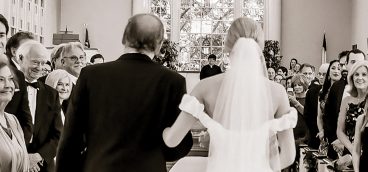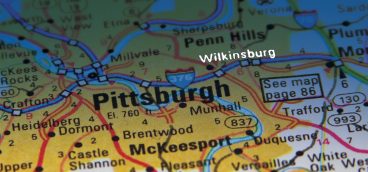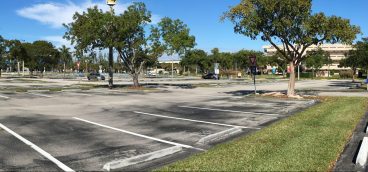
When I came to Pittsburgh in 1985, it was a great city — the late David McCullough called it “the essential American city.” But it was a great city in shock. The massive industrial economy had collapsed and 150,000 to 200,000 mainly young people were leaving for greener pastures.
I expected to stay for my 12-week newspaper internship and then be an international correspondent. Now, 38 years later, I’ve spent my whole career here — with a journalist’s front-row seat to Pittsburgh’s struggles. For the last 28 years, I’ve benchmarked Pittsburgh against regions across the country. And unfortunately, Pittsburgh is back to where it was 28 years ago — at the bottom of the benchmark regions, economically and demographically, because of a crisis 40 years in the making.
When those 200,000 people left in the early ’80s, they took their future children with them. So now, Pittsburgh has the nation’s highest natural population loss — more deaths than births — 17 percent more than Tampa/St. Pete, the second worst region, and 63 percent more than the third worst region, Bradenton/Sarasota. We’re also losing people to out-migration. In the last 10 years, the labor force in the average benchmark region increased more than 9 percent. Pittsburgh fared the worst with a 4.4 percent decrease. In that same period, jobs in the benchmark regions grew by an average of 28.2 percent. Just one region actually lost jobs: Pittsburgh. And in the last five years, our region lost 50,000 jobs — the most in Pennsylvania.
For decades we’ve seen this coming, but like the frog in the pot of water, the rising heat was so gradual that we weren’t motivated to move. Now that water is boiling. And if current trends continue unchecked, we face a future of decline with continued population loss, a diminishing tax base, an increasingly dismal Downtown, and the loss of cultural assets. Companies won’t come or stay because of the shrinking labor force — that’s already happening.
A vicious cycle and mentality of scarcity will take hold, with people clinging to their shrinking piece of the pie — everyone else be damned. Increasingly, we’ll look more like Johnstown than Pittsburgh. Perhaps worst among the dismal projections is that our children and grandchildren won’t be able to live here. There won’t be jobs for them. The most capable will leave first, mirroring the devastating brain drain of 40 years ago.
***
There’s another vision of Pittsburgh’s future, however. In this one, Pittsburgh is a leader in innovative thinking, a place where new ideas are again part of Pittsburgh’s essential character. A place where succeeding and making money is part of the ethos — and there’s enough of both to reignite the spirit of helping our neighbors. It’s a place where a black middle class flourishes. Where immigrants come because they’re welcomed and they realize Pittsburgh gives them their best shot at safely raising their families and living the American Dream.
It’s a green and beautiful place with a temperate climate, an abundance of water, and a natural environment that locals prize and protect. A place where Pittsburgh expats return, telling friends, “There’s something exciting happening in the Burgh.” They come back, not just for a better cost of living, superior quality of life, and close proximity to commercial hubs. No, they and others come because of the promise of being part of something bigger, something great.
Both of these possible futures are real. I believe the first will happen if nothing changes our current trajectory. And right now there is nothing on the horizon that will do that. Nothing, that is, except those of us who believe in the possibility of the second scenario and are willing to make it happen. There has never been a moment when that sense of possibility is more important.
The time has come for bold action at a scale we haven’t seen here in generations.
Since May, 72 people have been meeting to set the stage for that. On behalf of all of them, I’m asking you to join us in this campaign we call Pittsburgh Tomorrow.
The first meeting was a dinner including the leaders of 25 local media companies. We agreed to donate ad space and air time for a ubiquitous and tenacious public messaging campaign to inspire Pittsburghers to believe in and want to be part of an exciting new future. Such a partnership has never happened, and these media leaders deserve credit. Without their commitment, Pittsburgh Tomorrow wouldn’t exist. They are the necessary first step — because bringing our citizens together behind a new future is the key ingredient.
***
Pittsburgh Tomorrow’s initial focus is to stop our population losses. We must stop the losses to be sustainable.
Aside from messaging, which will undergird everything, we’re targeting four areas. One is immigration. We have, by far, the lowest percentage of immigrants of any benchmark region, and if we want to stop population loss and increase diversity, we need more foreign-born residents — whether directly from other countries or from other U.S. cities. We need to welcome them and help them succeed — and the first step is realizing that we need them. We need their vitality and we need their new businesses. For starters, we’ll launch a website about immigrants and their contributions to Pittsburgh. We’re surveying and interviewing local groups providing immigration services to learn what they’re doing and where gaps exist. This will help inform a blueprint — a comprehensive regional action plan on immigration.
Another is Pittsburgh expats, particularly millennials. They grew up and have family here. They know Pittsburgh’s charms and advantages. And they are the most likely to move here, especially the professionals who can work remotely and bring their jobs with them. We are creating an incentive plan to bring them and their small businesses back.
Students comprise the third group. The Allegheny Conference on Community Development has extensive research on the 130,000 college students who come each year, and they’ve launched some excellent projects — but the Conference doesn’t have the horsepower yet to do what other regions are doing (especially Philadelphia). We will work with them and the universities, and already have two initiatives in planning.
For high school students, we are launching a Pittsburgh Conservation Corps open to every high school in the county to pick up garbage, plant flowers and trees, and make this area more beautiful and climatically resilient. Young people believe they can change the world, yet we ask virtually nothing of them. This project will do three things. It will beautify Allegheny County. It will be an important plank in a long-term attract-and-retain strategy by having these young people — and their collegiate mentors — identify with Pittsburgh: “I planted that tree. This is home.” Finally, it will get national attention and change Pittsburgh’s image from old and Rust Belt to young and green.
Finally, we must cut the Gordian knot that says Pittsburgh is not a good place for African Americans. Before the industrial collapse and for most of the 20th century, black life thrived here — economically, with high-paying jobs, and culturally, with two Negro League teams, a dynamic entertainment scene and one of the country’s best black newspapers, the Pittsburgh Courier. We need to rebuild the black middle class and make this a place where black professionals feel welcomed and valued, where they can succeed in business and socially, and where their children take pride when they see murals of historic black figures who’ve helped shape this city. We will play a supporting role in building a long-term plan that will be led by Pittsburgh’s committed black leaders.
Like the other initiatives, it’s not going to be easy — what worthwhile thing ever is? But it’s doable, and we all know it’s time to work together and make it happen. As Father Paul Abernathy, CEO of the Neighborhood Resilience Project in the Hill District, said during a recent Pittsburgh Tomorrow meeting: “We need pioneers here, not settlers.”
***
That is a great metaphor for the whole Pittsburgh Tomorrow project. It won’t be enough for our message to be: “Move here. It’s a nice place to live, with low costs, and a high quality of life.” Every place in the country is saying that and vying for workers. And they don’t face the population and economic crisis that we have. If we just do what they’re doing, we won’t succeed.
This crisis isn’t just a long-term threat to vitality, however. It’s also a gift — a gift in the form of an opportunity. We have to think bigger, be bolder, aim higher. Our messaging nationally and in Pittsburgh needs to take our quality-of-life assets as a given.
Beyond that, our goal and messages have to be outrageously ambitious — namely, that we are building the best place for people of all kinds to thrive in the country. And we need to mean it.
We have an extremely rare opportunity to catalyze a sea change here, building on our strengths — which are considerable — and doing what Pittsburghers have always done: be trailblazers for the nation.
Only if we say, and perhaps even boast, “We’re building the best city in America. Join us!” — only then, will people across the country be jolted into taking notice. Only if we say that, and put our shoulders behind it, will we harness the real horsepower here: the people of Pittsburgh.
People everywhere want to be part of something bigger. That’s especially true of Pittsburghers because this city has a heroic past unlike other cities. For 100 years, Pittsburgh was a metaphor for can-do strength. Pittsburghers want this city to matter again. And our job is to rekindle and fan that desire and, along with many others, help give it shape. Here’s is a sampling of the 72 Pittsburgh Tomorrow volunteers who have been doing just that since May:
Michelle Fanzo is executive director of the American Institute of Architects, Pittsburgh. In the mid-’90s, she founded the Pittsburgh Urban Magnet Program (PUMP).
Lew Irwin is a retired two-star Army general who teaches public policy at Duquesne University.
Sloane Davidson is the founder and CEO of Hello Neighbor, a nonprofit improving the lives of recently resettled refugee and immigrant families.
Rod Doss publishes the New Pittsburgh Courier.
Bill Flanagan has been deeply involved in Pittsburgh since arriving as a KDKA journalist in 1983, as Money Editor, host of the long-running “This week in Business,” and a leader at the Allegheny Conference.
Melanie Marie Boyer is a Colombian and U.S. citizen and is executive director of the Pittsburgh Metropolitan Area Hispanic Chamber of Commerce and Foundation.
Jim Busis publishes the Jewish Chronicle.
Pittsburgh expat Tara Hannaford is a national branding executive who is returning to Pittsburgh, where she and her husband hope to raise a family.
Thomas Hark started and ran the Vermont Conservation Corps for 29 years and is helping to design the Pittsburgh Conservation Corps.
Tracy Certo was the publisher of Pop City and founding publisher of NextPittsburgh.
John Buckley is a retired BNY Mellon managing director responsible for strategic change, including corporate social responsibility.
Nevena Staresinic emigrated to Pittsburgh from the former Yugoslavia. She’s a real estate agent who helps largely white-collar immigrants mesh with Pittsburgh.
Evan Rosenberg publishes the Pittsburgh Business Times.
Kanak Iyer emigrated from India and founded the Asian American Chamber of Commerce, Pittsburgh.
Patrick Rice is a millennial who, in 2021, returned home after living in New York, Los Angeles and San Francisco, to raise a family with his wife and focus on his real estate business, Rice Pegher.
Bay Area transplant Reign Ramirez was a Coro Fellow and now is operations and programs manager for the Pittsburgh Hispanic Chamber of Commerce.
Communications specialist Samarth Bhaskar is a native of New Delhi, India, who moved to Pittsburgh last year.
Lizzie Kolln, Swarthmore grad and captain of her college lacrosse team, is a strategic communications professional who has just moved to Pittsburgh from New York and is Pittsburgh Tomorrow’s first employee.
Bill Schenck has run many large banks and was Pennsylvania Secretary of Banking. He has led recent efforts to improve Wilkinsburg and will chair the Pittsburgh Tomorrow board.
Jim Gibbs is the co-founder and CEO of Meter Feeder, a promising software company that helps drivers pay for parking wirelessly and helps major fleet owners save money by improving the monitoring of their cars. He’s the holy grail of what American cities are recruiting: a black founder and CEO of a tech company. Several cities are offering him major funding to move there. We want to keep his company, his wife and their five sons in Pittsburgh (which is where they want to stay).
***
Our volunteers are terrific, but you can’t make this kind of change just with volunteers. We need to hire and incentivize a small professional staff to make things happen. And for that, we’ll need financial support.
We need resources to forge our immigrant action plan. We need resources for the expat and black middle class incentive plans. We need resources for the Pittsburgh Conservation Corps.
Our bias is toward action, but we can’t steam ahead fueled by enthusiasm alone. This region has deep resources, and the real change will come when we raise money. Dick Simmons started us in October with an initial donation of $100,000. Dick gave that money on the condition that it leverages more donations. He said, “Tell all my friends I want them to get behind this too.” And so far, individual Pittsburghers have increased that initial gift sixfold.
Phase 1 of our fundraising will get us operational for three years and prove our concepts. It will have three prongs: individuals, companies and foundations. We need your help, whether it’s your brainpower or your financial support. If you’re an individual who wants to breathe new life into the place you call home, we need your financial help at any level. If you run a company that needs a healthy Pittsburgh, we need you. If you’re a fourth-generation proud Pittsburgher, we need you. If you’re a newcomer who sees what this place could become, we need you.
Whatever you can bring to the Pittsburgh Tomorrow party — whether it’s $100 or $100,000 — we need you. And, it’s going to be a party.
After we have the support of Pittsburgh citizens (which is growing by the day) and Pittsburgh businesses, we will approach Pittsburgh’s philanthropic foundations, which control some $15 billion in civic risk assets. Help us get their attention by donating.
Let them know the community believes in a new Pittsburgh future.
Learn more at Pittsburgh Tomorrow. Please contact us at hello@pittsburghtomorrow.org.
We can make this happen. We need to make this happen. We are making this happen.
Finally, remember this next part — and I hope you like the sound of it: We’re building the best city in America. Join us!














